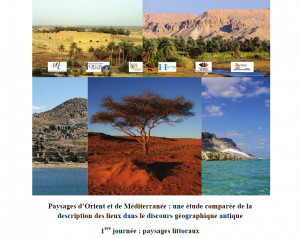An atelier in France

Around the end of 2014 I received an invitation to present a paper at a workshop organised by the Université d’Artois. This workshop, which takes the form of a series of meetings, deals with the perception of landscapes in ancient textual sources. Its aim is to investigate how did ancient authors face new, previously unfamiliar places and by what means did they describe them (i.e. transmit the information) for the general public who was unable to travel there.
The sessions of the atelier bear this general title: Paysages d’Orient et de Méditerranée: une étude comparée de la description des lieux dans le discours géographique antique. The first session, in which I presented, took place on the 20th of May in Arras (France) and focused on maritime landscapes. That workshop was excellently organised by Stéphane Lebreton (Université d’Artois) and Pierre Schneider (Maison de l’Orient et de la Méditerranée), and I also had the chance to meet two other outstanding researchers, Jean-Marie Kowalski (École Navale and Paris-IV Sorbonne) and Pierre-Olivier Leroy, editor and translator into French of the 15th book of Strabo.
In my paper, I presented the maritime landscape of Egypt. I chose Egypt as a case-study because it is in the Eastern Mediterranean (as required by the workshop) and because we have plenty of textual sources about this country. I presented a number of passages from multiple and various origins: administrative papyri, historical reports, geographical descriptions and even medical curiosities. By means of reading them all I believe I was able to demonstrate that, in order to achieve a whole picture of the ancient reality, the reading of a wide range of texts is necessary and enriching. This was also in line with the feedback I got, especially from the geographer present at the conference. In general, my colleagues and audience found it curious to see that it was the doctors who furnish us with data on the flora and fauna of Egypt.

